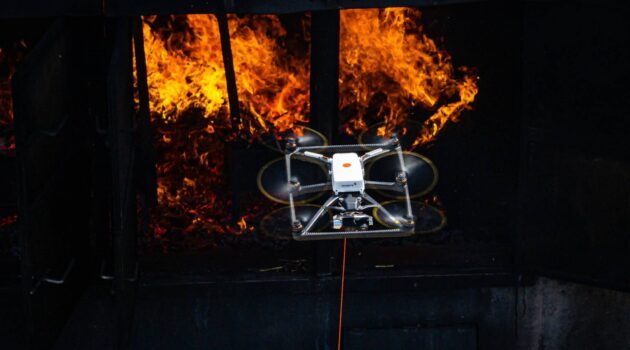

In February 2024, the Securing Growth and Robust Leadership in American Aviation Act (FAA Reauthorization) was passed, calling for specific actions and timelines regarding drone regulation. Fotokite, an international provider of tethered drones for emergency response, has released a whitepaper highlighting how this new legislation impacts public safety organizations using their tethered drone technology.
Legislation focused on “Actively Tethered UAS,” a specific category of unmanned aircraft systems that grants public safety organizations unprecedented operational flexibility, could help public safety agencies scale their drone programs.
Actively Tethered UAS
The concept of Actively Tethered UAS was first introduced in the 2018 FAA Reauthorization Act, allowing public entities to operate these drones without the need for remote piloting certifications or Certificates of Authorization (COA). However, certain restrictions remained, such as altitude limits and the exclusion of volunteer firefighters from these operational freedoms.
Over the past six years, Actively Tethered UAS have been successfully deployed in various high-impact missions, including structure fires, search and rescue operations, and large event security. The new FAA Reauthorization Act builds on this foundation, providing further operational freedoms and clarifying regulations. The whitepaper details the provisions relative to actively tethered UAS, below is a brief summary of the Fotokite analysis.
Key Provisions of the 2024 FAA Reauthorization Act
- Operational Exemptions: Public safety agencies are now exempt from many regulatory requirements, allowing them to operate in previously restricted areas without needing specific certifications.
- Expanded Access: The Act now includes all volunteer firefighters, enabling more personnel to operate these drones without additional regulatory hurdles.
- Safety Enhancements: Actively Tethered UAS must include safety features to ensure reliable and safe operations.
Operational Requirements
Certain safety requirements remain:
- Altitude Limits: Operations are limited to 150 feet above ground.
- Overflight Restrictions: Drones cannot fly over non-participants.
- Visual Line of Sight (VLOS): Operators must keep the drone in sight.
- Yield to Manned Aircraft: These drones must give way to manned aircraft.
Advantages of Actively Tethered UAS
These drones offer significant benefits for public safety missions:
- Enhanced Safety: Tethers reduce the risk of uncontrolled descents.
- Extended Flight Time: Continuous power supply allows for longer operations.
- Situational Awareness: High-quality video feeds enhance decision-making.
- Rapid Deployment: Quickly deployable in various scenarios.
The 2024 FAA Reauthorization Act is a pivotal development for public safety agencies using drone technology. By reducing regulatory barriers and expanding operational freedoms, the Act empowers these organizations to utilize Actively Tethered UAS more effectively, enhancing public safety and protecting communities across the nation.
Read the full whitepaper here.
Read more:
- In the Wake of FAA Reauthorization, Drone Delivery Companies Plan Expansion
- How the New FAA Reauthorization Bill Facilitates UAS Integration into U.S. Airspace
- FAA Reauthorization Bill Paves the Way for eVTOL Flight Integration and Advanced Air Mobility
Miriam McNabb is the Editor-in-Chief of DRONELIFE and CEO of JobForDrones, a professional drone services marketplace, and a fascinated observer of the emerging drone industry and the regulatory environment for drones. Miriam has penned over 3,000 articles focused on the commercial drone space and is an international speaker and recognized figure in the industry. Miriam has a degree from the University of Chicago and over 20 years of experience in high tech sales and marketing for new technologies.
For drone industry consulting or writing, Email Miriam.
TWITTER:@spaldingbarker
Subscribe to DroneLife here.